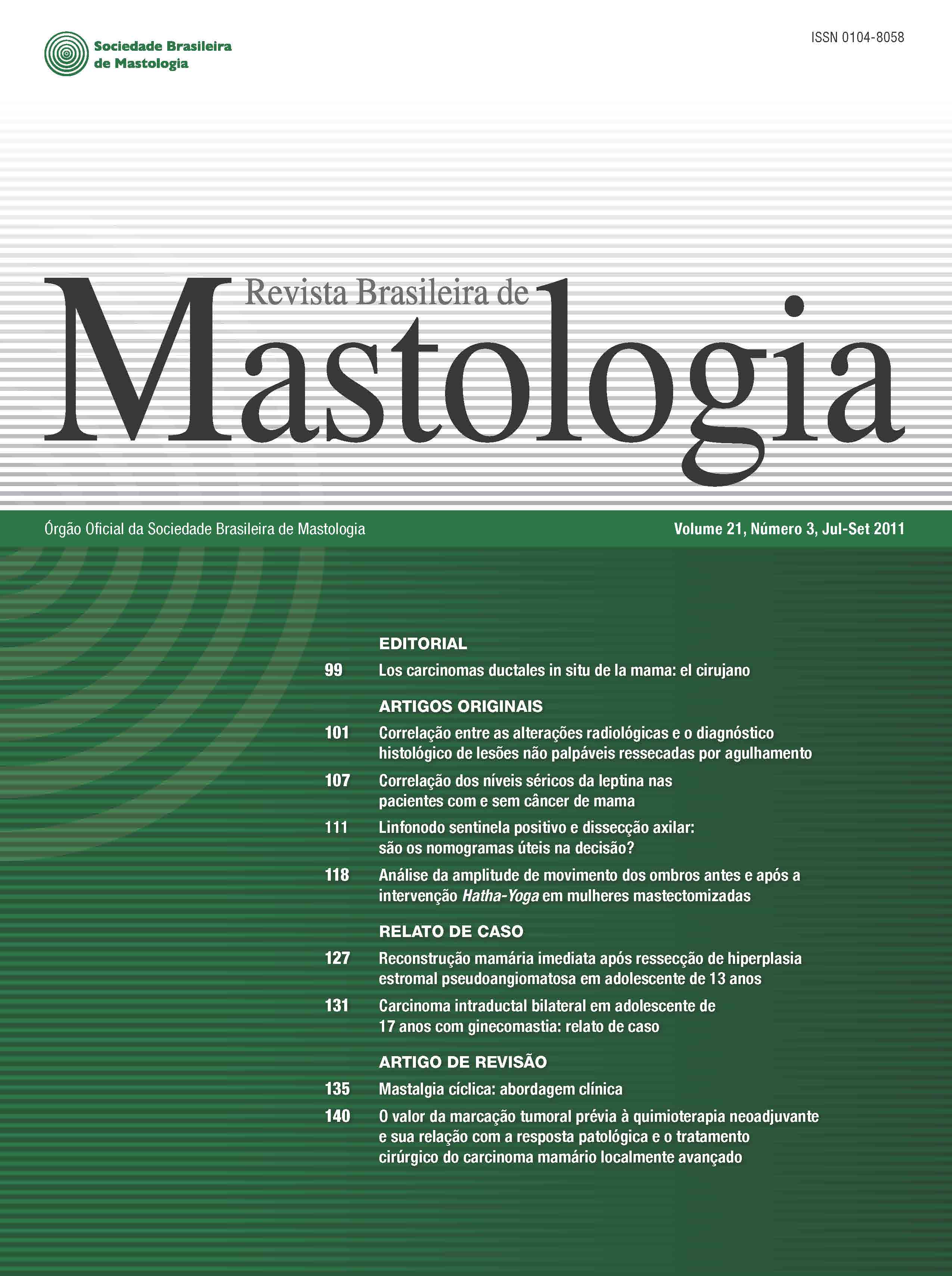Positive sentinel lymph node and axillary dissection
are nomograms useful in the decision?
Keywords:
Sentinel lymph node biopsy, Breast cancer, NomogramsAbstract
The aims of this study were: to determine the rate of additional axillary lymph nodes metastasis in patients with early breast cancer, who underwent sentinel node biopsy with positive result; to identify factors that might predict such impairment and, mainly, to determine the applicability of the main nomograms developed with the intention of predicting the chance of axillary involvement beyond the sentinel node. A retrospective study involving 49 patients with early breast cancer, clinically negative axilla who underwent sentinel lymph node biopsy with positive result, they were then submitted to axillary dissection in the period from January 01st, 2009 to December 31st, 2011. The analysis of the studied variables is given in a descriptive way. The likelihood prediction of the involvement of sentinel lymph nodes was calculated using nomograms MSKCC, Stanford and Tenon, which had their accuracy calculated using area under the receiver operating characteristic curve. Of the 49 patients with positive sentinel lymph node, 18 (36.73%) had additional metastases in the axillary dissection. None of the analyzed characteristics alone was able to identify which patients had lymph node involvement beyond the sentinel. The nomograms MSKCC, Stanford and Tenon were respectively 64.6, 62.7, and 46.0% of accuracy. We concluded that the axillary dissection was unnecessary in 63% of the cases, no variable was able to predict the axillary involvement beyond the sentinel, and MSKCC and Stanford nomograms were able to recognize around 63% of the times patients with or without additional disease in lymph nodes.










